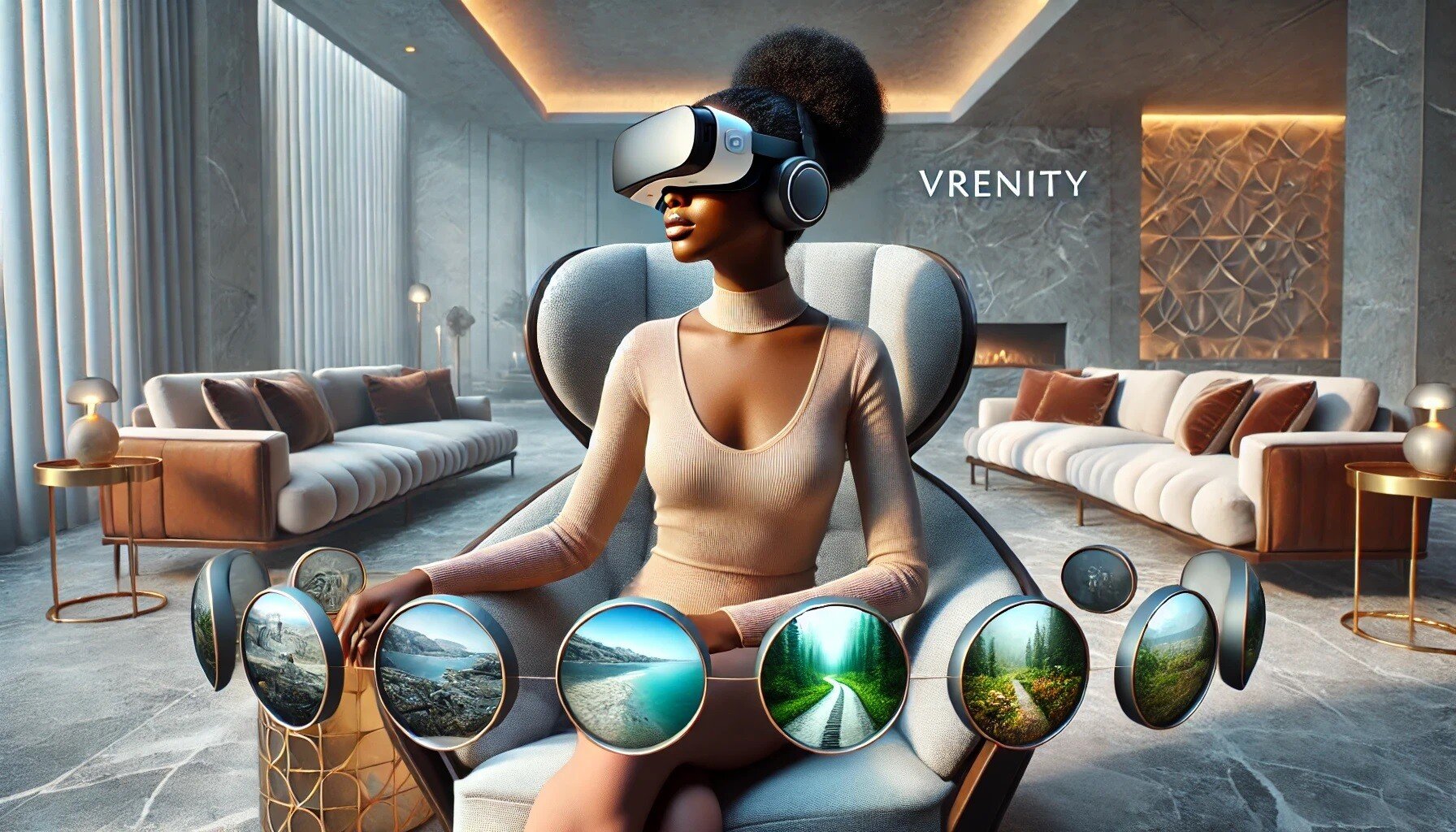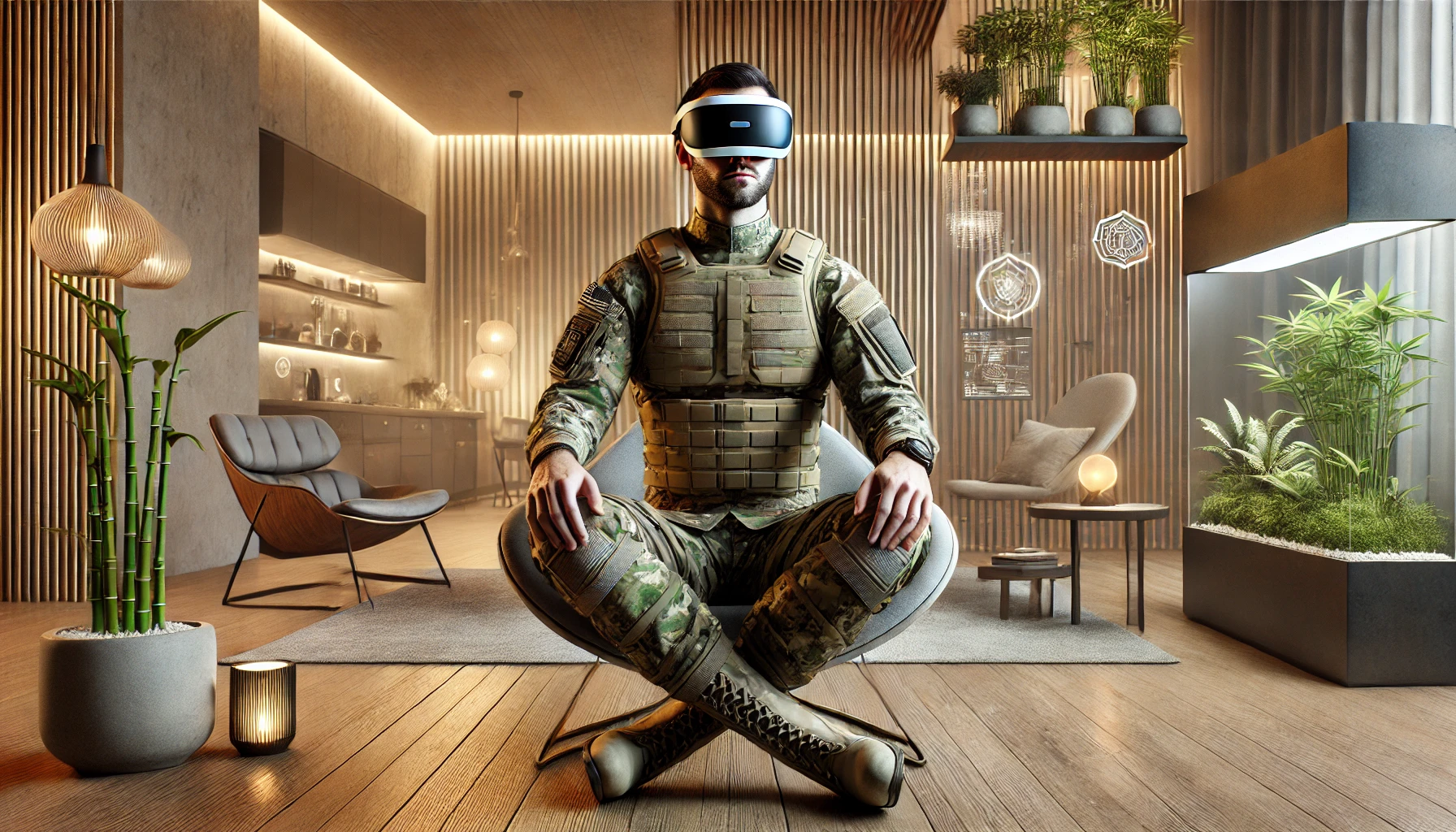Negative thought patterns are a common challenge faced by individuals dealing with anxiety, depression, and other mental health conditions. These thoughts, often automatic and persistent, can shape how we perceive ourselves, our abilities, and the world around us. However, with the rise of new technologies like virtual reality (VR), there are emerging, innovative ways to break these cycles and reframe our thinking.
Virtual reality is proving to be a powerful tool in mental health care, offering immersive experiences that help individuals confront their negative thoughts and reframe them in more positive, productive ways. In this blog, we explore how VR is being used to challenge negative thought patterns and promote healthier thinking.
What Are Negative Thought Patterns?
Before diving into how VR helps, it’s important to understand what negative thought patterns are and how they affect mental health. Negative thought patterns, also known as cognitive distortions, are inaccurate or unhelpful ways of thinking that can contribute to feelings of anxiety, depression, and low self-esteem. These might include thoughts like:
- Catastrophizing: Always expecting the worst possible outcome in a situation.
- Black-and-white thinking: Seeing things as all good or all bad, with no middle ground.
- Overgeneralization: Making broad conclusions based on one negative event.
- Personalization: Blaming oneself for events outside of one’s control.
These patterns can become automatic and deeply ingrained, making them difficult to challenge with traditional methods alone. This is where VR can play a transformative role.
How Virtual Reality Disrupts Negative Thought Patterns
Virtual reality provides an immersive environment where individuals can experience scenarios that trigger their negative thoughts and feelings. What makes VR unique is its ability to simulate real-life situations in a controlled, safe environment where users can practice reframing their thoughts in real-time. Here’s how VR can help:
1. Simulating Challenging Situations
For many people, negative thoughts are triggered by specific situations or environments, such as social interactions, work-related stress, or overwhelming tasks. In traditional therapy, individuals might talk about these triggers or imagine themselves in these situations, but VR takes it a step further by creating fully immersive simulations of these scenarios.
For example, a person struggling with social anxiety might have automatic thoughts like "Everyone is judging me" or "I’m going to embarrass myself" when entering a crowded room. In a VR simulation, they can safely practice entering social spaces, giving them the opportunity to confront those negative thoughts head-on. By gradually becoming more comfortable in these situations, users can begin to reframe their thoughts from "I’m going to fail" to "I can handle this."
2. Guided Cognitive Restructuring
Cognitive restructuring is a technique used in cognitive behavioral therapy (CBT) to help individuals identify and challenge negative thought patterns. In VR, this process can be enhanced through guided exercises that not only simulate triggering scenarios but also provide real-time feedback and coaching.
As users experience challenging scenarios in VR, they can receive prompts that encourage them to pause and reflect on their automatic thoughts. The system can guide them through cognitive restructuring exercises, helping them challenge unhelpful thoughts and replace them with more balanced, realistic alternatives. This guided process helps users practice reframing their thoughts in the moment, making it more likely that they will apply these skills in real-life situations.
3. Creating Positive Reinforcement Loops
VR can also be used to reinforce positive thought patterns through repeated exposure to success in challenging situations. Many people struggling with negative thoughts have experienced failures or setbacks that reinforce their cognitive distortions. Virtual reality provides a space where individuals can safely practice confronting their fears and anxieties, building confidence through repeated positive outcomes.
For instance, a person dealing with fear of failure might experience a VR scenario where they are tasked with completing a difficult project. As they successfully navigate the scenario and receive positive reinforcement for their actions, they begin to challenge the belief that “I always fail.” Over time, this repetition creates a new cognitive loop where success, rather than failure, becomes the default expectation.
4. Mindfulness and Relaxation in Virtual Spaces
Another way VR can help reframe negative thought patterns is by immersing individuals in calming, mindful environments that promote relaxation and self-reflection. Negative thoughts often take root when the mind is stressed and overwhelmed. VR can create peaceful, immersive spaces—such as a beach at sunset or a tranquil forest—where individuals can practice mindfulness and focus on the present moment.
This practice of mindfulness allows users to observe their thoughts without judgment, which is a critical skill in breaking negative thought cycles. Over time, practicing mindfulness in VR can help individuals become more aware of their thought patterns and develop healthier ways of responding to them.
The Science Behind VR and Cognitive Reframing
The use of VR in mental health care is backed by a growing body of research. Studies have shown that VR can be an effective tool for cognitive behavioral therapy, especially when it comes to exposure therapy and cognitive restructuring. In a 2020 study published in JMIR Mental Health, researchers found that VR-based therapy significantly reduced symptoms of anxiety and depression in participants compared to traditional therapy alone. The immersive nature of VR made it easier for individuals to confront their negative thought patterns and work through them in real-time.
Moreover, because VR is a controlled environment, it allows therapists to gradually adjust the intensity of scenarios to match the user’s progress. This personalization makes VR a flexible and adaptable tool for treating a wide range of mental health conditions.
Conclusion: Rewiring the Brain with VR
Negative thought patterns don’t have to be a life sentence. Virtual reality offers a new, innovative way to confront and reframe these thoughts by immersing individuals in realistic, yet controlled, environments. By combining VR with cognitive restructuring techniques, exposure therapy, and mindfulness practices, individuals can learn to challenge their negative thoughts and replace them with more positive, empowering beliefs.
As VR continues to evolve, its applications in mental health care will only grow, offering individuals a dynamic and powerful way to manage their mental health and break free from the cycle of negative thinking. For anyone struggling with anxiety, depression, or self-doubt, VR provides a new pathway to healing—one that is immersive, engaging, and tailored to the unique challenges of each individual.
The future of mental health is virtual, and it’s helping to reshape not just how we think, but how we think about thinking.
 Nerdle
Nerdle



